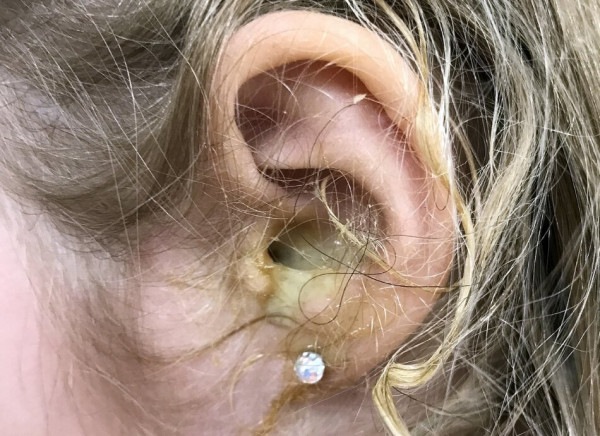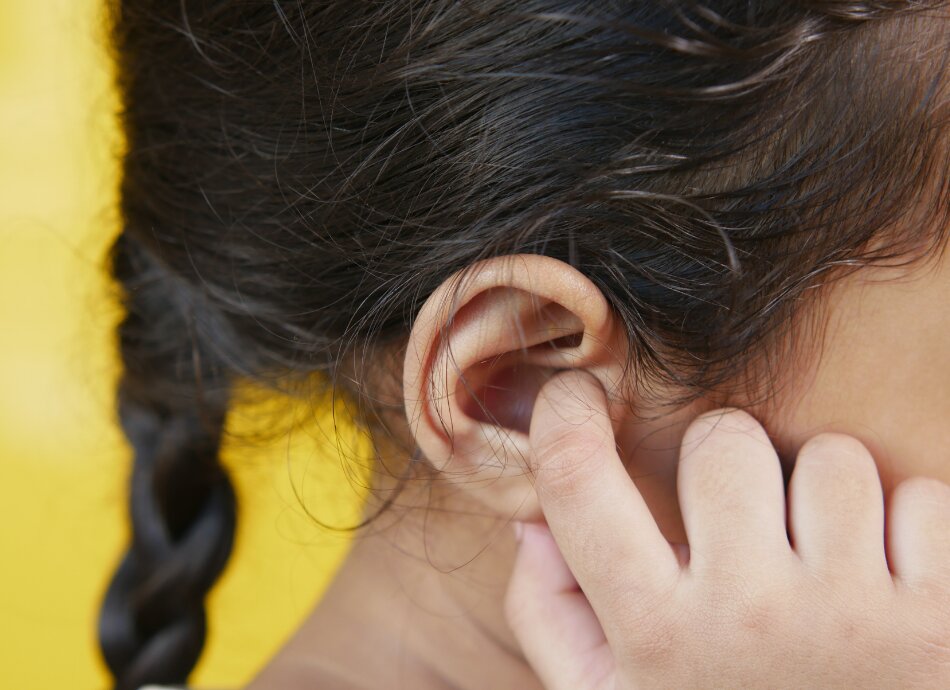Earwax
Earwax is naturally produced by the body to protect the inside of your ear from water and infection. It's golden brown and wet if you are of European or African ethnicity. It may be yellow or white and dry if your ethnicity is East Asian or Pasifika.
If it’s earwax coming from your ear it shouldn’t hurt. Usually, earwax moves slowly from the inside to the outside of your ear, where it is wiped away. Sometimes earwax can build up and block the ear canal. Read more about Read more about earwax build-up and removal.
Otitis externa (swimmer's ear)
This is infection of the skin in the outer ear canal, between the eardrum and the outer part of your ear. It can also affect the skin around your ear. It causes itching and discharge from your ear which can be thin and clear or yellow. As time goes on your ear canal can get red and swollen, with pain that gets worse when you move your earlobe. This is the most common cause of ear discharge in adults (even if you haven’t been swimming.) Read more about otitis externa.
Otitis media (middle ear infection)
This happens when bacteria or cold viruses get into the middle of your ear, behind the eardrum. It's painful. Pus can build up and burst the eardrum, then the pus comes out of your ear. It looks thick and white, yellow or brown, sometimes with blood. When your eardrum bursts the ear pain usually gets better. This is the most common cause of ear discharge in children.

Image credit: Gzzz Wikimedia Commons
A perforated eardrum
There are other causes of burst eardrums which can cause ear discharge. The eardrum is a thin tissue inside your ear, that separates your outer ear and middle ear. When sounds waves enter your ear, the eardrum vibrates, sending messages to your brain which allow you to hear. A perforated eardrum is a small hole or tear in your eardrum. It usually heals within a few weeks or months, provided your ear is kept dry and there’s no infection, but sometimes it can cause a white, slightly bloody, or yellow fluid from the ear.
Other causes of a perforated eardrum include:
- Putting something in your ear like a cotton bud or hair clip.
- Injury from hitting your head hard.
- Sudden changes in pressure eg, when flying at high altitude or scuba diving.
Grommets
Grommets are tiny plastic tubes inserted through the eardrum for people (usually children) who have glue ear. Glue ear is mucus in the middle ear that won't go away. Grommets allow air into the space behind the eardrum (middle ear) which reduces the risk of fluid building up there. If you have grommets and you do get a middle ear infection, the pus flows out through the grommet.






